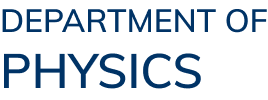Abstract
Confluent tissues represent a class of foam-like active biological matter that has recently been studied through the lens of active nematic liquid crystals, where topological (orientational) defects are thought to be functionally significant. Yet, the relationship between lattice defects in Voronoi tessellations and orientational defects in the nematic field has remained unclear. To address this, we develop a computational framework based on the Active Vertex Model to simultaneously characterize both defect types in confluent cellular systems. Our approach uncovers a fundamental spatiotemporal relationship between lattice defects and +1/2 orientational defects, establishing a unified physical description. We also simulate cell motion through hexagonal tissue structures, revealing two distinct mechanical behaviors: direction-dependent drag coefficients with preferred migration axes, and a direction-independent threshold force for cell mobilization indicative of a uniform caging potential. Most significantly, we identify that coordinated motion of cell pairs along optimal directions preserves tissue architecture through an emergent self-repair mechanism of lattice defects. These results provide new mechanistic understanding of topological defect interactions during collective cell migration, offering physical principles relevant to diverse biological processes including tissue regeneration and cancer spread.
